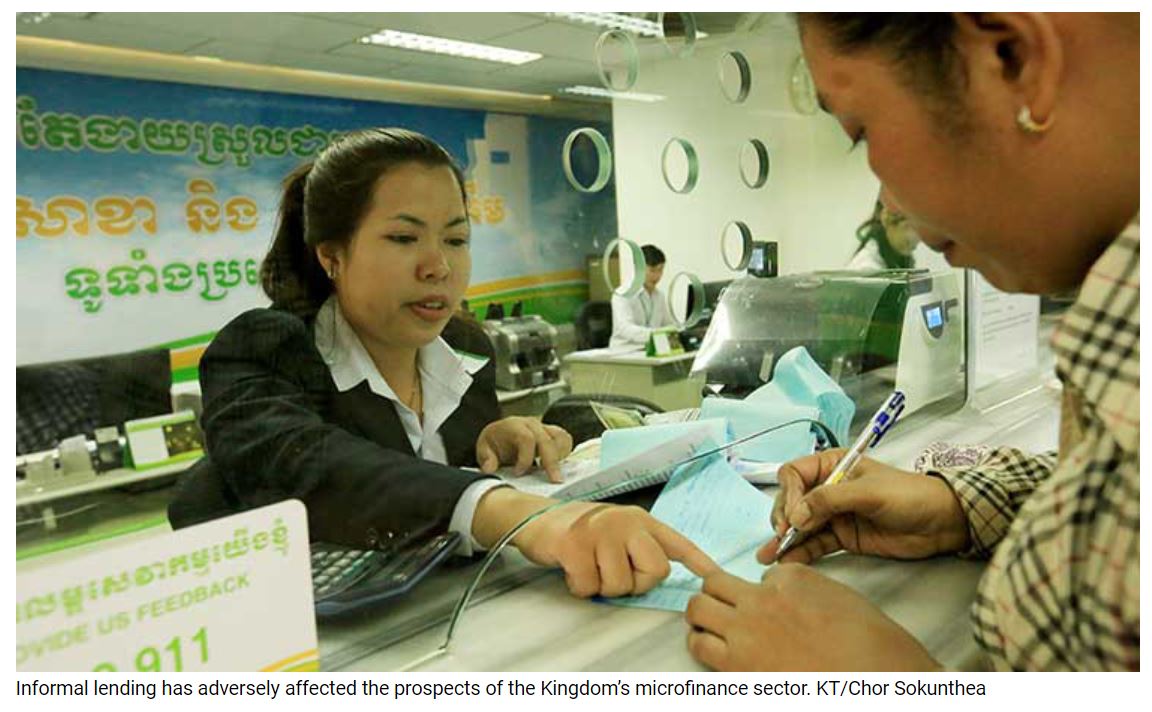Cambodia: Rapid rise in illegal lending huge obstacle to microfinance success
Rapid rise in illegal lending during the pandemic as well as the post-pandemic period has created new challenges before the microfinance sector, especially in rural areas, according to the latest study carried out by a group of researchers on informal debts and microfinances in Cambodia.
The study sponsored by the National University of Singapore also finds that juggling debts between the formal and informal sectors is leading to over-indebtedness among many rural households in the country.
Over 35 percent of the rural households interviewed as part of the survey held loans with informal lenders. These lenders include family members, neighbours, agricultural supply merchants, landlords and professional moneylenders. Loans are offered on variable terms based on their relationship with the borrowers.
“While family and close neighbours generally provide small loans at little to no interest, moneylenders charge on average three to five percent per month, with lower interest for more reputable, and better-known, borrowers,” the study discovers.
“Few of these lenders require collateral on loans. In addition to these local lenders, there has been a rise in daily lenders (who are called luy roab in Khmer) and pawnshops in the past two years.
“These lenders are based outside of the villages, driving in to loan money to take advantage of households struggling with the loss of income from the COVID-19 pandemic. They charge between 20 and 30 percent per month — by far the highest interest rates of all informal lenders.”
The study highlights that quite contrary to the existing narrative among policy-makers and academicians, the growth of microfinance has not stopped people from approaching illegal money lenders.
Governmental data obtained by the study group reflect that one in three adults borrow from a combination of formal and informal sources. “In the villages of Baku and Sala, where we conducted our research, people similarly borrowed from both types of lenders. On the one hand, 43 percent of the households we interviewed held a loan with a bank or MFI (microfinance institution). The primary reason is that these institutions offer lower interest rates than informal lenders, averaging 1.5 percent per month (excluding fees and other service charges).
“Formal lenders are also able to provide large loans because they lend against land-based collateral. Informal loans are smaller because lenders either lack sufficient money to lend as much as banks and MFIs, or they refuse to do so because the risks are too high. As such, households turn to bank and MFI loans to make large purchases, such as for home renovation or lump-sum farm expenses.”
Many reasons were cited by households to borrow informally before the researchers. And the primary reason is accessibility; in contrast to microfinance loans, informal loans are quickly accessible in times of need, such as an accident or health emergency.
“Most informal lenders are located nearby and can be contacted outside of business hours. Second, and relatedly, informal lenders require little to no official paperwork. They can provide loans to borrowers with less hassle,” the study reveals.
The study concludes by suggesting immediate reforms for the microfinance sector as well as proper research into rural lending practices by policy-makers to systematically annihilate the role of informal lenders.
“Claims about the social impact of microfinance are based on a flawed understanding of household borrowing practices. Correcting this problem within the commercial industry is particularly important given current efforts to expand formal financial services in the name of financial inclusion.”
Cambodia’s microfinance sector recorded over 20 percent growth both in terms of loans and deposits by the end of 2022 compared to the same period in 2021, despite the Covid-19 pandemic and the war in Ukraine, according to the Cambodia Microfinance Association.
The loan portfolio last year grew to $9.135 billion with a little over two million client accounts. Deposit at the five Microfinance Deposit-taking Institutions also increased to $4.686 billion, which is 20.1 percent rise with 2.66 million depositors.
Source: https://www.khmertimeskh.com/501315922/rapid-rise-in-illegal-lending-huge-obstacle-to-microfinance-success/


 Thailand
Thailand




